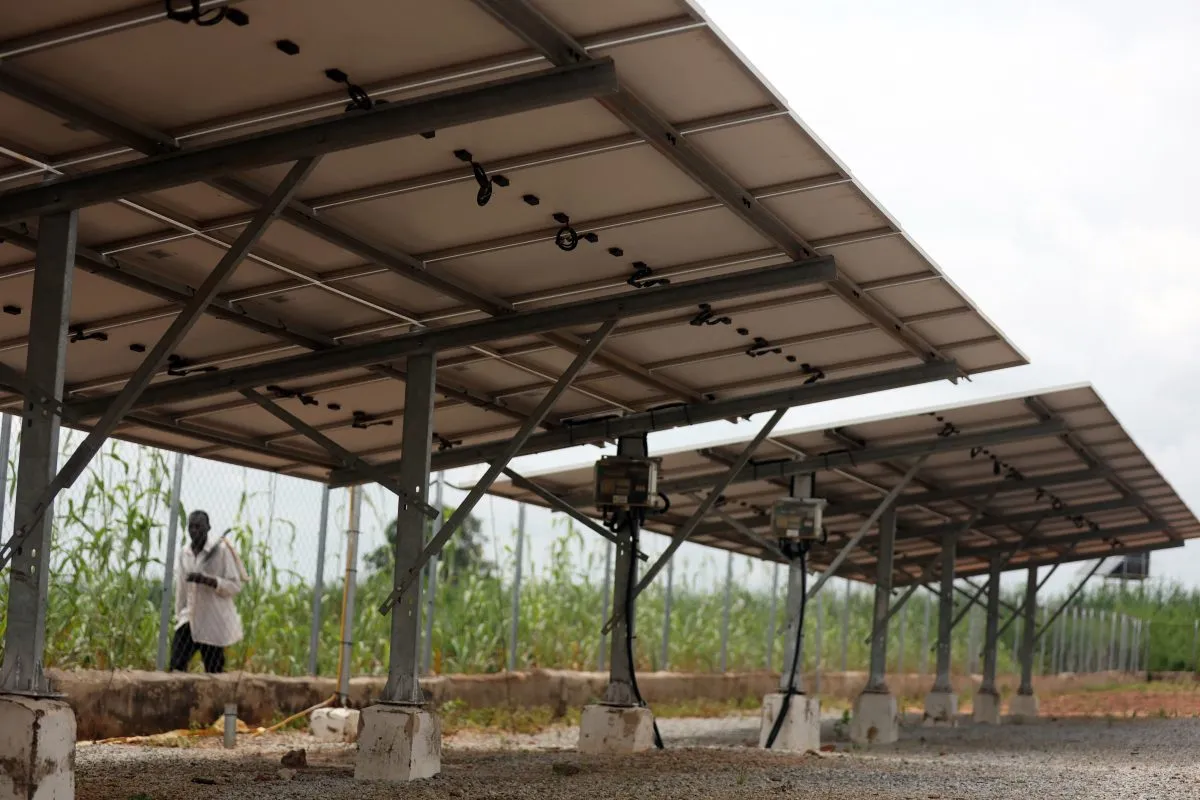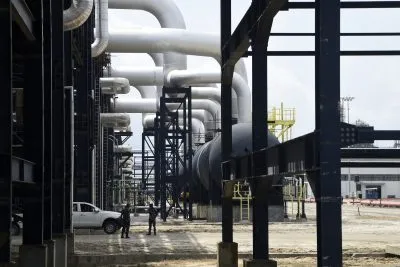China has recently been in the news for having what some are calling an overcapacity of solar panel manufacturing. China’s share in all the manufacturing stages of solar panels – from polysilicon to silicon ingots, wafers, cells and completed modules – accounted for about 80% of global solar panel manufacturing capacity.
The world’s top ten solar photovoltaic (PV) manufacturing equipment suppliers are all located in China, and they are all highly competitive against each other. The price of solar panels fell by three-quarters between 2012 and 2022, according to figures from the International Renewable Energy Agency (IRENA) and then fell by almost a further 50% in 2023 alone, according to the International Energy Agency (IEA).
Similarly, in the electric vehicles (EV) industry oversupply has become a major issue in China, coupled with price wars between several EV companies. In the past two years alone, the number of EVs sold in China grew from 1.3m to as many as 6.8m annually, making China the world’s largest electric vehicle market in 2022 for the eighth consecutive year.
Countries such as the US or Germany have expressed concerns over China’s apparent prowess in environmental goods – especially as China now leads with 17.3% of global trade in environmental goods, followed by the United States (11.5%), Germany (11.2%), and Japan (5%).
Transferring lessons
But what impact does this shift have on African countries – and what could it have? What lessons can be learned for Africa’s local ownership of the environmental goods market? This is particularly pertinent in the context of the forthcoming Forum on China-Africa Cooperation – where cooperation around climate change is expected to be a key area for negotiation.
Africa currently accounts for a mere 1% of environmental goods trade, and this is strongly concentrated in a few markets, such as South Africa, Morocco and Egypt. As a result of this, production of renewable energy on the continent is low compared to the rest of the world. For example, the entire African continent produces 13 GW of power from solar panels; in comparison Japan – a single country with a population more than 100 times smaller than that of the continent – produces close to 80 GW of solar power. The continent has a declared ambition to reach 300 GW of renewable energy capacity by 2030, as well as becoming a global manufacturing hub by 2063. Neither will be possible without moving at China speed – or faster.
African solar generation might be accelerated by the reduction in the price of solar and other environmental goods: the scale and competition in China has been positive for Africa in this regard.
But merely importing more and faster was not China’s path. There were three key steps that China took to get to where it is on environmental goods.
Adapted industrial policies matter
First, national polices matter, and adapted industrial policies are prerequisites to develop environmental goods. China’s Renewable Energy Law, adopted in 2005 and amended in 2009, set national renewable targets and laid the foundation for the development and utilisation of renewable energy sources. Successive five-year plans then set several policies, including feed-in tariffs and state and provincial capital subsidies. Against this backdrop China’s renewable installed solar energy capacity increased from 267.9 GW in 2011 to 1453.7 GW in 2023, an increase of more than 440% in twelve years.
Subsequent policies, including guidance on promoting the healthy development of the photovoltaic industry, the new energy vehicle industry development plan (2021-2035) the development of industries for green and low-carbon transition related to solar PV panels and new energy vehicles, have greatly facilitated the development of environmental goods in China.
Second, in China leveraging external resources to build the capacity of local enterprises significantly accelerated the growth and efficiency of these sectors. For instance, China took advantage of projects funded by the World Bank to lay the ground for PV development at a large scale, including the China Renewable Energy Development Project and the China Renewable Energy Scale-Up Program Phase I. There was also cooperation with Denmark, Germany, the UK, Japan and Canada, including financial support, technical assistance, capacity-building and research and development. More recently, Chinese PV companies raised $7bn through stocks and convertible bonds on US stock markets.
Third and last but not least, China’s own demand and scenarios were at the centre – not demand determined by external actors. Drawing lessons from China’s PV industry development, customised solutions tailored to end-user demand proved most effective in driving competitiveness.
For instance, Chinese PV companies started to scale up by installing solar panels on rural rooftops, but once they had scale they shifted to providing solar electricity for other uses such as industry or processing. This is a strategy that can be adapted to African contexts where electricity grid stability is often an issue.
Are these three lessons relevant to Africa? And can the forthcoming FOCAC help drive more benefits for African countries?
Leveraging Africa’s advantage in reserves of critical minerals, which are key components for PV and battery manufacturing, offers a major opportunity to integrate supply chains and to develop the manufacturing of environmental goods.
Many African countries already have policies on scaling up renewable energy, climate change and sustainable development at the continental, regional and national levels.
Most, however, address environmental protection as an aspiration; or they target trade in environmental goods through tax exemptions or tax incentives on imports.
Ethiopia, for instance, has announced a policy of importing only electric vehicles. But no African country has yet been found to have a comprehensive policy on the manufacturing of environmental products – whether solar or EVs.
Added to this, many of Africa’s development partners have committed grants and loans to renewables; for example the Africa Renewable Energy Fund and the Sustainable Energy Fund for Africa. China has done so as well – for example at COP28 China announced new solar and micro-grid initiatives for Africa.
These initiatives are helpful, but they suffer from two limitations. First, they need to scale up: most are not, for instance, large enough to support country-wide feed-in tariff schemes, so they are difficult to sustain and rely on.
Second, most include no policies on the sources of the renewable energy – whether it should be from solar panels or wind turbines or batteries. The risk is that these funds exacerbate external dependency on imports of environmental goods rather than alleviating it. A similar effect was seen in the healthcare sector with regards to vaccines during the Covid-19 pandemic. African governments need to be significantly more demanding with partners to meet African local needs, just as China was.
Not by decentralisation alone
Finally, while decentralised renewable energy (DRE) systems can offer reliable, affordable power to urban households in areas with unstable grids, and to remote, off-grid communities – as projects like Utilities 2.0 in Uganda have done successfully – this can only go so far in meeting African needs, especially if Africa is to become a global manufacturing hub. Certainly, integrating solar mini-grids with existing power utilities, as China did, can help solar firms to become more profitable; but large-scale solar, wind and hydro are also a necessary focus, because only these can support industries.
To date, Chinese suppliers and construction firms have been heavily involved in the delivery of tens of renewable projects in Africa, both large and small. Very few of these are financed by Chinese banks, and again, most remain at a fairly small scale, under 500 GW.
The upshot? Africa will not follow China’s path to become a major environmental goods manufacturer unless green policies are more holistic, and until Africa’s development partners pay more attention to localisation and to scale. The forthcoming FOCAC can help in this regard, if there is all round more ambition.
Want to continue reading? Subscribe today.
You've read all your free articles for this month! Subscribe now to enjoy full access to our content.
Digital Monthly
£8.00 / month
Receive full unlimited access to our articles, opinions, podcasts and more.
Digital Yearly
£70.00 / year
Our best value offer - save £26 and gain access to all of our digital content for an entire year!

 Sign in with Google
Sign in with Google 



